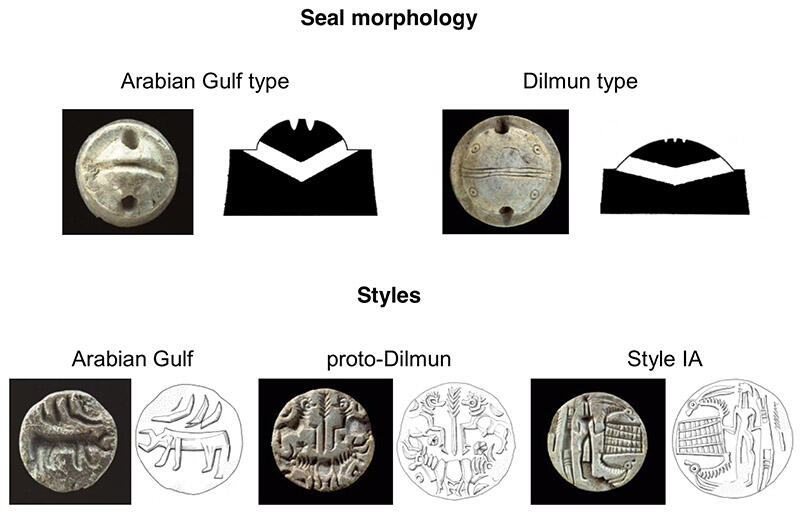A fascinating article from the mammoth Walking with the Unicorn book that delves into the brief, intense life of ancient Indus-inspired seals in Dilmun (Bahrain) around 2000 BCE. The authors use the unique and extensive evidence from this Gulf civilization to to draw some important inferences about these seals, which may or may not be relevant to the ancient Indus people from whom the traditions of making and using seals were clearly derived. For example, skeletons in burials indicate "that at the time of internment they were placed around the neck as part of the personal adornment of the deceased." Then there is the fact that children seem to have used seals, again from evidence in cemeteries: "The association of seals with a considerable portion of individuals younger than 12 years of age – i.e. about half the amount attested for ‘adults’ – highlights their apotropaic and amuletic properties. These properties, which were probably imbued in all seals, may also have contributed to seals not being desirable items to be taken from the burials by robbers."
What is so interesting about seals in ancient Dilmun is that large groups of the population seems to have worn them; they were not just used by elites as we think was the case in ancient Mohenjo-daro and Harappa: "Despite the many problems, uncertainties, and restrictions that make it difficult to ascertain the overall number of seals present in Early Dilmun society, the combined evidence from cemeteries, settlements, and temples shows unambiguously that the stamp seal was a common-type artefact that circulated widely among most, if not all, of its echelons. Concomitantly, the recovery of a fair number of Arabian Gulf and proto-Dilmun seals from the settlement at Tell F3 and in City IIb-c contexts from the settlement at Saar (Crawford 2001: 16 – 7), and the multi-generational use of at least some of the ‘institutional’ seals impressed on clay tokens (Olijdam 2015: 211 – 2), reveal that seals from different spheres were passed on through the generations – a practice that may well have been more common than previously envisioned."
Another example of fine archaeological sleuthing and speculation, that, as the authors put it, "bolster the commonly accepted theory of a westward transmission of Harappan sealing technology, which has so far been based primarily on iconographic analysis." It also shows how much current continuing excavations in the Arabian Gulf are likely to cast new light on ancient Indus people, crafts and practices.

